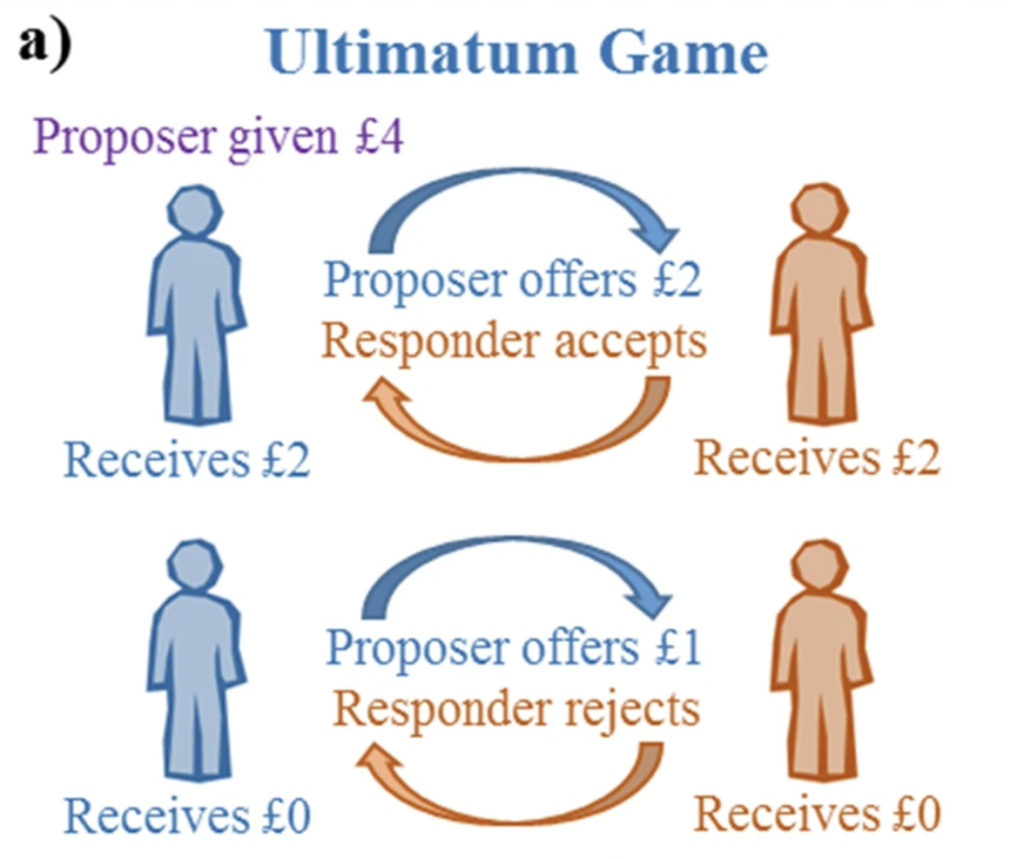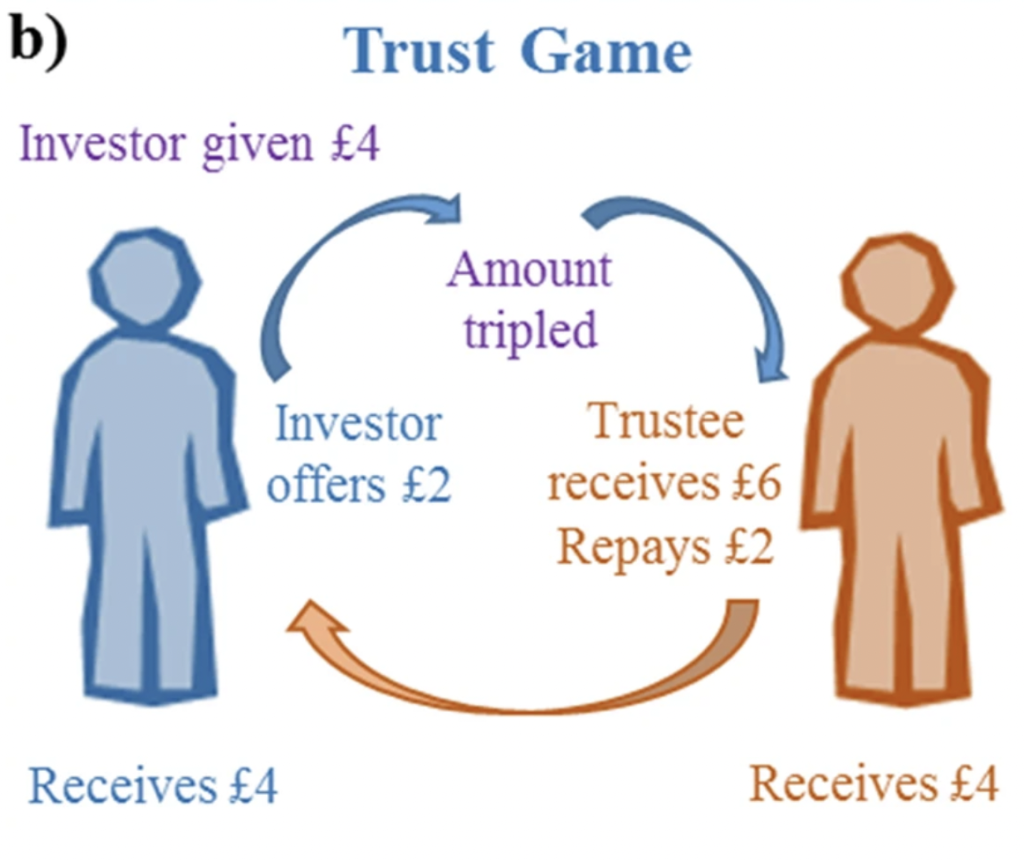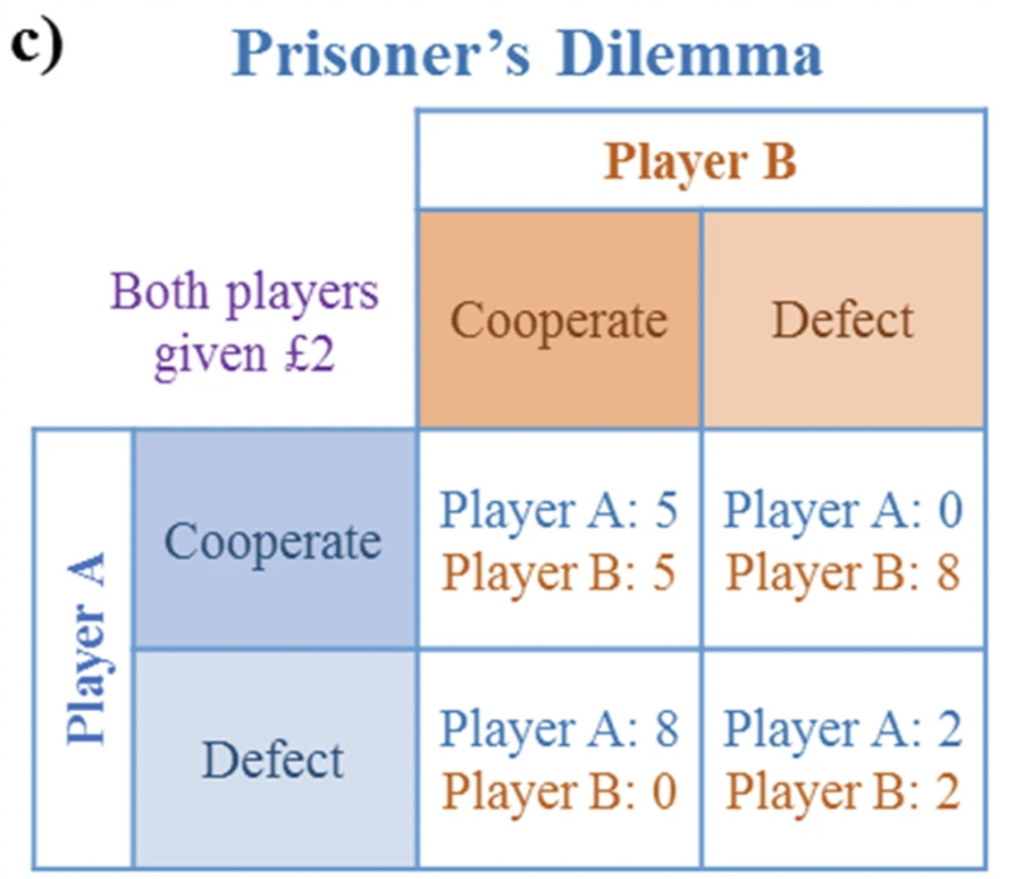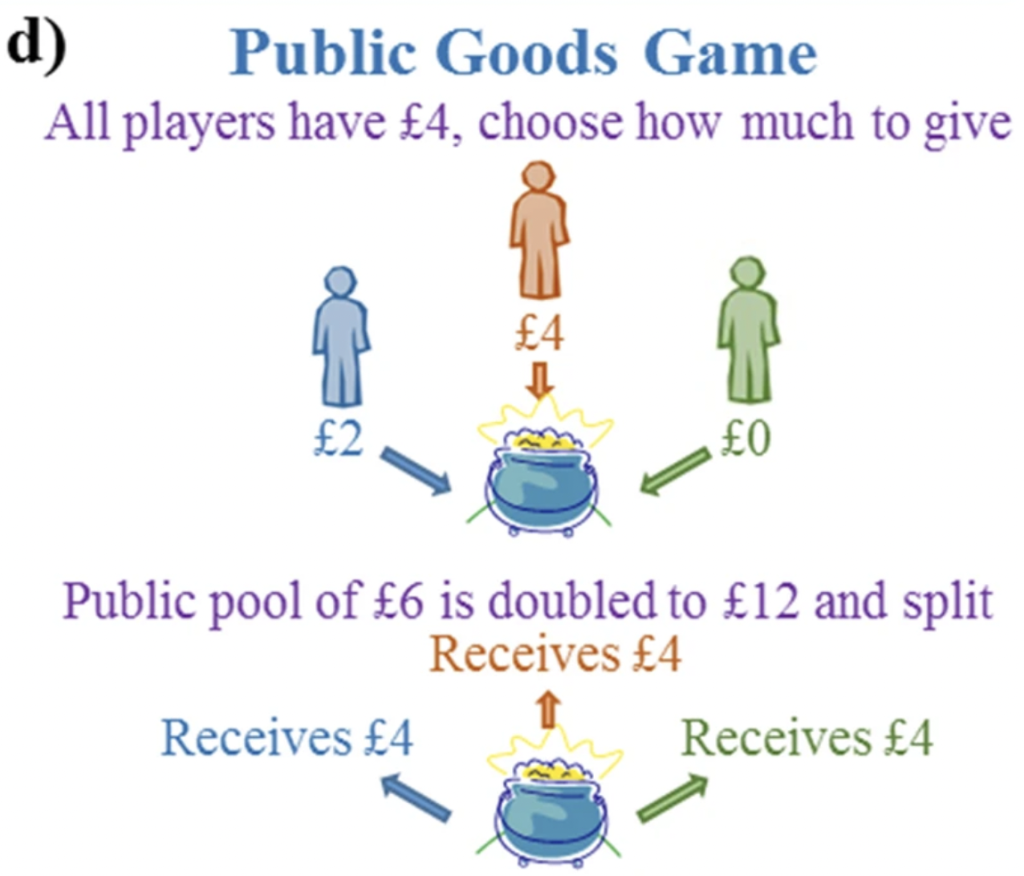4 Gameplays in Neuroeconomics – A Summary
The process of decision making in social situations can be very complicated, such that disruption to one’s capability of understanding and acting on social information can cause massive effects on their life. An effective way of measuring social decision-making that has also been adapted in neuroimaging is neuroeconomic games which allow for the biological basis for behavior. This article will summarize the 4 gameplays in neuroeconomics, including Ultimatum Game, Prisoner’s Dilemma, Public Goods Game, and Trust Game. This article based on Gountouna et al. (2020). Images taken from Gountouna et al. (2020).
Ultimatum Game
Regarded as the easiest of the games, the Ultimatum Game focuses on evaluating the players’ reaction to the justness of offers of a portion of the cash. The game involves endowing the Proposer with money, of which they are responsible for deciding what share to give to the Responder. The Responder bears the right to accept or decline the offer. If the Responder accepts, they both get the amount initially proposed, but when the responder declines, no one gets paid.

What Rationality teaches us: The Proposer should offer the lowest share for maximum reward, and the Responder should take any offer greater than 0. Most of the time, the Proposer’s offers are fair offers of 30-50%, and lower offers of less than 30% are mostly rejected. When the same partners play several times, the Proposer’s offers tend to be influenced by the Responder’s acceptance rate, thus meaning that decisions are made based on current situations and experience.
So, when receiving fair offers, the areas of the brain responsible for cognition, emotion, action planning, and reward processing display an increase in oxygen level-dependent response, otherwise known as (BOLD). As a result, these parts create reflexive emotional systems that punish norm violations and deliberate systems that veto the negative emotional response while suppressing self-interest to enable rejection.
While if proposers make fair offers, the increased BOLD in regions responsible for reward and morals portray how they think of their earnings and how the other player feels, respectively. In the presence of an unfair offer, the electroencephalography (EEG) medial frontal negativity response increases, thus reflecting the emotional reaction to the social norm violation.
As a result, when patients with depression act as the Proposer’s, they make more fair bids than controls, and as the Responder’s, they reject more unfair bids than controls. Patients with bipolar found greater rejection when fairness was ambiguous compared to controls and made angry remarks about the game though they regretted it later.
Trust Game
Trust Game is all about measuring reciprocity or trustworthiness and trust. In the game, the investor is endowed with cash and decides whether to send some, none, or all to the trustee. Each unit before reaching the trustee is multiplied by the experimenter, primarily by 3. The trustee can decide if they’ll send some, all, or none of the cash to the investor. To earn more, the investor has to invest though it’s risky since the trustee can back out of the deal. The trustee should not return the cash for maximum returns, and the same applies to the investor.

This game shows that different parts of the brain are involved in various stages like in decisions on trustworthiness, the cortical and sub-cortical regions are involved, and in deciding what to return /send, it’s the frontal areas. The Discovery of outcomes activates the reward circuitry, emotion processing, and evaluation regions.
To suggest an aversion to uncertainty, reports have indicated that the anterior insula is activated when deciding to trust single-shot games, and during multi-shot games, the ventral striatum response rises. For the trustee, the choice to reciprocate involves the intraparietal sulcus and anterior insula, proving the evaluation of options. The investor’s dorsal striatum experiences an increase in activity during feedback of the trustee’s response, confirming reinforcement learning.
As a result, patients with depression portrayed more reciprocity than controls compared to healthy men. Patients with bipolar showed more reciprocity than controls.
Prisoner’s Dilemma

With Prisoner’s Dilemma, it’s all about cooperation. The players are rewarded the same amount of cash and decide whether to keep or share the money simultaneously. If both parties cooperate, the payoff is enormous and is split evenly. A player can back out for maximum returns, and the other party cooperates. Hence the perfect strategy is to defect though half the time, players cooperate. In this game, patients with depression are unlikely to cooperate, react negatively to betrayal, and are critical of themselves after a betrayal.
Public Goods Game
Public Goods Game is quite similar to the prisoner’s dilemma, except it has a personal and public pot and is played in a larger group. Earnings in the public pot are doubled and shared amongst the participants, while gains from the private pots are specified. For maximum profits, all players have to cooperate, while to earn the most, it’s wise to defect. The optimal strategy in this game is when you don’t contribute to the public pot. There should be a punishment or communication for the cooperation to remain intact.

Despite neuroeconomic gameplay being in its early development stages, significant consistencies have been observed across disorders. These consistencies include avoiding hostile social interactions, reduced reward sensitivity, reduced activities in brain parts that deal with the processing and response to social information, and impaired amalgamation of social and cognitive communication.
References
Robson, S.E., Repetto, L., Gountouna, VE. et al. A review of neuroeconomic gameplay in psychiatric disorders. Mol Psychiatry 25, 67–81 (2020). https://doi.org/10.1038/s41380-019-0405-5

